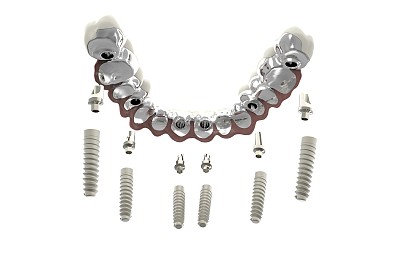Enhancing Quality of Life Through Advanced Dental Implant Treatment Options and Innovations in Modern Dentistry
Summary: In recent years, advancements in dental implant treatment options have significantly enhanced the quality of life for many individuals. This article explores four key areas of innovation in modern dentistry: the evolution of dental implant technology, benefits of 3D imaging and simulation, the rise of minimally invasive techniques, and the role of patient education in successful outcomes. Each aspect contributes to a comprehensive approach in providing patients with functional, aesthetic, and long-lasting dental solutions, ensuring that they can enjoy improved oral health and wellness.
1. Evolution of Dental Implant Technology

The realm of dental implants has experienced a profound evolution over the past few decades, characterized by significant technological advancements. Historically, dental implants were often limited to traditional metal fixtures. However, todays options include a variety of materials like titanium and biocompatible ceramics, which can better integrate with the jawbone.
Furthermore, improved implant designs have emerged, such as the use of cone-shaped and tapered implants that offer better stability and ease of placement. This innovation reduces the risk of complications and enhances the overall success rate of implant procedures.
Lastly, the introduction of immediate-loading implants, which allow for the attachment of temporary crowns on the same day, has transformed patient experiences. This allows individuals to enjoy improved aesthetics and functionality almost immediately after the surgical procedure, boosting their confidence and overall quality of life.
2. Benefits of 3D Imaging and Simulation
Modern dental practices are increasingly adopting advanced 3D imaging technologies, profoundly impacting dental implant planning. Cone Beam Computed Tomography (CBCT) enables precise visualization of the jaw structure, which is crucial for finding the best implant placement. This method allows dental professionals to assess bone density and identify anatomical structures, leading to better outcomes.
Moreover, virtual simulation software can create customized treatment plans. By virtually implanting the digital models, dentists can anticipate potential challenges and optimize the implant position. Such detailed planning reduces the need for exploratory surgeries and minimizes the risks associated with implant operations.
The integration of 3D imaging into the dental workflow empowers patients by allowing them to visualize their treatment outcomes and understand the process better. This transparency fosters informed decision-making and enhances patient trust in their dental care team.
3. Rise of Minimally Invasive Techniques
Minimally invasive techniques have gained traction in modern dentistry, reshaping how dental implants are performed. Traditional procedures often involve extensive incisions and bone grafting, leading to higher discomfort levels and prolonged recovery times for patients. In contrast, modern methods focus on reducing trauma to the surrounding tissue.
One prominent technique is the use of flapless implant surgery, where dental professionals place implants without cutting the gum tissue. This approach results in less bleeding, quicker healing times, and reduced postoperative discomfort, allowing patients to resume their daily activities sooner.
In addition to flapless techniques, the application of laser technology in implant surgery promotes precision and reduces recovery times. Lasers can assist in bone and soft tissue procedures, leading to a more streamlined and comfortable experience for patients, ultimately elevating their quality of life.
4. Role of Patient Education in Successful Outcomes
Patient education is crucial in ensuring successful dental implant outcomes. Understanding the entire process empowers individuals to make informed choices regarding their oral health. Dental professionals play a vital role in educating patients about the benefits, risks, and maintenance of dental implants.
Effective communication enhances patient expectations, leading to increased satisfaction levels post-treatment. By discussing different implant options and personalized care plans, dentists help patients align their treatment choices with their lifestyle and aesthetic desires.
Moreover, continuous education after the placement can foster better oral hygiene practices, essential for the longevity of implants. Patients who are well-informed about their care and maintenance are likelier to achieve success and avoid complications, further enhancing their overall quality of life.
Summary:
Through the exploration of advanced dental implant treatment options, we can appreciate the vast progress made in enhancing peoples quality of life. The evolution of technology, through 3D imaging, minimally invasive techniques, and the critical role of patient education, has created a holistic approach that fosters health and well-being. These innovations not only improve the dental experience but also lead to significant gains in overall satisfaction and confidence.
This article is compiled by Vickong Dental and the content is for reference only.



